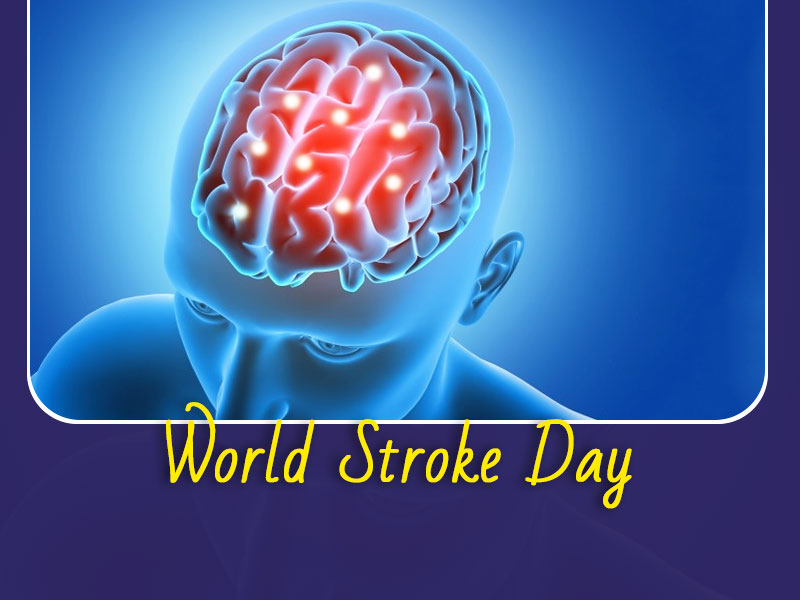
One in four persons suffers from stroke globally, according to the American Stroke Association. In a bid to spread awareness about this highly prevalent disease, World Stroke Day is celebrated on October 29 every year. It was first observed in 2006 by the World Stroke Association and has been celebrated since then. Stroke, also called brain stroke, happens when the blood flow to the brain reduces or gets cut off. It can lead to disability and even death. A few decades ago, the global stroke prevalence was one in six, which has come down to one in four. But, are there any ways to prevent it in the first place? The answer is -- yes. But, before learning the ways, let us understand the disease a little better.
What Is A Stroke & How Is It Caused?
“Stroke occurs when the blood supply to a part of your brain is reduced,” said Dr Kunal Sinkar, Interventional Cardiologist, Holy Family Hospital, Mumbai. When this happens, your brain doesn’t get oxygen and nutrients and its cells start to die in minutes. Notably, strokes happen due to chaotic heart rhythm (atrial fibrillation), which leads to the collection of blood in the heart's upper chambers (atria), which in turn leads to clotting. In case a blood clot in the heart’s left upper chamber breaks free, it can travel to the brain and cause a stroke. Here are some of the possible causes for stroke:
- High blood pressure is of the most common causes
- Diabetes
- Cardiovascular diseases
- High cholesterol
- Smoking
- History of having temporary symptoms of strokes.
Men are at a higher risk of getting a stroke than women, however, women have a higher risk of death and worse recovery post-stroke.
Also read: Heart Attack, Cardiac Arrest, Stroke: What Is The Difference?
Symptoms Of A Stroke

(Photo Credit: Freepik)
Following are some of the symptoms associated with a stroke:
- Numbness in the face, arm, or leg muscles
- Difficulty in speaking
- Sudden and severe headaches
- Dizziness
- Reduced consciousness
- Vomiting
Since brain cells start to die minutes after having a stroke, prompt medical intervention is extremely crucial to prevent other complications and even death.
How To Prevent A Stroke?

(Photo Credit: Freepik)
“The best treatment for stroke is the prevention of stroke,” said Dr Ranjan Shetty, HOD & Consultant - Interventional Cardiology, Manipal Hospital, Bangalore. Thus, it can be prevented by following these simple tips:
- As you know high blood pressure and diabetes are among the risk factors for stroke. Hence, try to maintain your blood pressure (120/80mmHg) and blood sugar level (less than 140 mg/dL).
- Monitor your heartbeat and cholesterol levels regularly.
- Quit smoking
- Quit drinking
- Reduce your intake of sodium and fat.
- Have an active lifestyle by exercising regularly. In fact, just 20-30 minutes of workout can reduce your risk of stroke considerably.
Hence the goal should be to have a healthy lifestyle and take care of your overall health. Other than these,
- The risk of a stroke can be reduced with the use of oral anticoagulants for patients who have atrial fibrillation, said Dr Sinkar.
- In recent years, many non–vitamin K antagonist OACs (NOACs) have been shown to be effective in the prevention of stroke.
- Also, procedures such as Left Atrial Appendage Closure, (LAA, or LAAC) are often done to reduce stroke risk, which happens as a result of atrial fibrillation. LAAC is a minimally invasive procedure to reduce the risk of stroke.
Also read: World Stroke Day 2021: 7 Myths And Facts About Stroke You May Not Know
Hence, these are some of the ways you can prevent the risk of suffering from a stroke.
(With inputs from Dr Kunal Sinkar, Interventional Cardiologist, Holy Family Hospital, Mumbai and Dr Ranjan Shetty, HOD & Consultant - Interventional Cardiology, Manipal Hospital, Bangalore)
Also watch this video
How we keep this article up to date:
We work with experts and keep a close eye on the latest in health and wellness. Whenever there is a new research or helpful information, we update our articles with accurate and useful advice.
Current Version